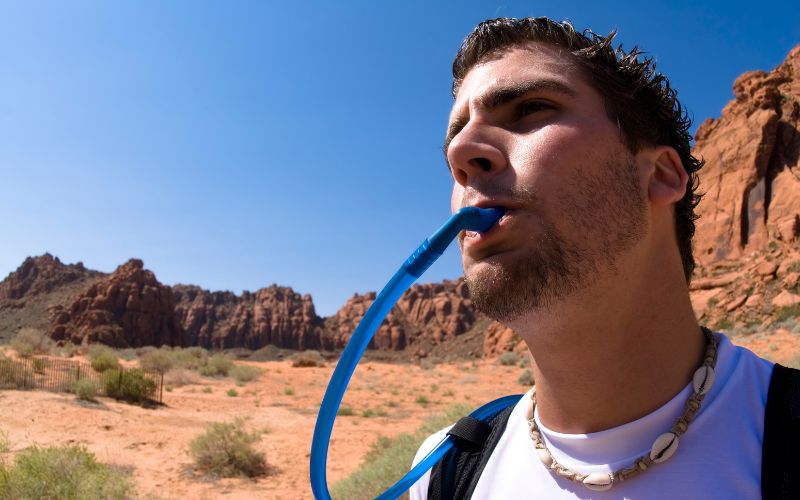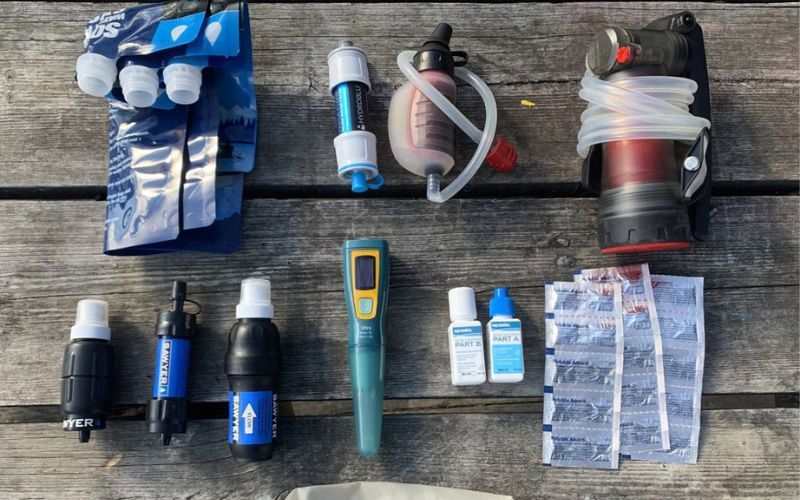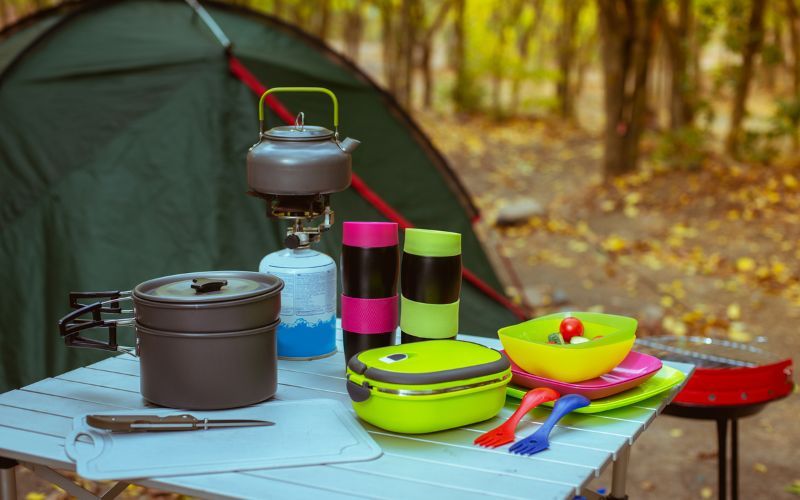
Hydration Packs : The Nexus of Convenience and Super Necessity 2023
In the realm of outdoor adventures and rigorous athletic pursuits, staying hydrated isn’t just a suggestion—it’s imperative. While traditional water bottles have done the job for centuries, the modern adventurer craves efficiency. Enter Hydration Packs, devices tailored to deliver on-the-go hydration. Seamlessly integrated into the day’s activity, they symbolize a harmonious fusion of design, function, and necessity.

Table of Contents
The Evolutionary Leap: Tracing the Origins of Hydration Packs
The journey of Hydration Packs is not merely one of invention but of refined evolution, paralleling mankind’s own development in outdoor exploration and endurance sports. As societies grew and outdoor activities transitioned from mere survival-driven tasks to recreational and competitive pursuits, the necessity for efficient hydration solutions became palpable.
In ancient times, nomadic tribes, desert caravans, and pioneering explorers depended on primitive versions of hydration systems. These included animal skins or rudimentary flasks, which were bulky, cumbersome, and often prone to leaks. While they were essential, these primitive solutions were far from efficient. The process of retrieving, opening, consuming, and then storing away was tedious and, in many scenarios, led to wastage of precious water.

Fast forward to the 20th century, the dawn of endurance sports and long-distance events unearthed a need for a modern solution. Athletes, especially cyclists participating in long haul races like the Tour de France, grappled with the challenge of staying hydrated without losing momentum. The primary solution, bottles stored in cages attached to the bike frame, was not ergonomically efficient. This was particularly true for mountain bikers navigating rugged terrains where every second mattered, and reaching down for a bottle was both inconvenient and potentially dangerous.
It was this pressing need that birthed the idea of Hydration Packs. Early models, emerging in the late 1980s and early 1990s, were simple but transformative. The concept was a reservoir, or bladder, made from flexible plastic or rubber, housed within a backpack. A long hose, attached to the reservoir, allowed for hands-free drinking. These rudimentary packs, though far from perfect, were game-changers. They allowed athletes to sip water without breaking stride or losing focus, thus optimizing performance.
The initial adoption was slow, with many purists skeptical about the design and its efficiency. However, as tweaks were made to the design, incorporating user feedback and technological advancements, Hydration Packs began their ascendancy. They transitioned from being niche products for the athletic elite to indispensable gear for anyone adventuring outdoors.
Today, while the basic concept remains unchanged, the technology, materials, and design philosophies enveloping hydration packs have undergone sea changes. They stand as testament to human ingenuity and our undying spirit to push boundaries, be it in athletic endeavors or technological innovations.
Anatomy of Excellence: Dissecting the Modern Hydration Pack
In the realm of outdoor gear, the Hydration Pack represents a harmonious marriage of functionality and innovation. As with any product that undergoes rigorous evolution, the modern hydration pack is a sum of its meticulously crafted parts, each designed to address specific user needs and environmental challenges. A thorough dissection of its anatomy offers invaluable insights into why these packs have become indispensable for outdoor enthusiasts and athletes alike.
The Reservoir: The heart of every hydration pack, the reservoir, or bladder, has seen impressive advancements in design and material. Early versions made of rudimentary plastics have now given way to BPA-free, taste-neutral materials that ensure water remains uncontaminated. Additionally, the reservoir’s shape and structure have been engineered to distribute weight evenly, preventing discomfort or strain on the user’s back. Integrated baffles minimize water sloshing, a nuanced but vital aspect, especially for runners or bikers who require stability.

Hose and Bite Valve: The hose, often reinforced to prevent kinks and breakages, serves as the conduit from the reservoir to the user. Its length and flexibility are calibrated for easy access. The bite valve, a critical interface, has been honed over the years to prevent leaks while ensuring a steady flow of water. Many modern designs incorporate a lock mechanism and high-flow valves, allowing users to regulate their water intake with precision.
Back Panel and Straps: Beyond hydration, a pack needs to be ergonomic. The back panel, often padded and channeled, promotes airflow, reducing the risk of a sweaty back—a noteworthy consideration during intense physical exertion. Adjustable shoulder, chest, and waist straps are more than mere fixtures; they’re critical for distributing weight, reducing bounce, and ensuring the pack conforms comfortably to a user’s anatomy.
Storage Compartments: While the primary function of Hydration Packs is to store water, modern designs incorporate pockets and compartments for essentials. Whether it’s a dedicated slot for a multi-tool, a zippered pocket for nutrition bars, or an elastic pouch for a light jacket, these additions transform the hydration pack from a single-purpose tool to a versatile companion.
Material and Durability: Lightweight yet rugged materials ensure the hydration pack stands up to the rigors of the outdoors. Whether facing abrasive rock surfaces or being exposed to the elements, the pack’s exterior is crafted to withstand and endure. Furthermore, materials are often chosen for their resistance to fungal or bacterial growth, ensuring the water and the pack remain clean and safe.
Innovative Add-ons: Many modern packs come with features that cater to specific user groups. Reflective patches for nighttime safety, insulated reservoirs to maintain water temperature, magnetic clips to keep hoses in place, and even quick-release mechanisms for emergency situations showcase the thoughtfulness invested in design.
The modern Hydration Pack isn’t just a product; it’s a testament to years of understanding user needs, relentless testing, and pioneering design philosophies. It embodies a commitment to enhancing outdoor experiences, ensuring that something as fundamental as hydration is efficiently addressed, allowing adventurers to focus on the journey ahead.
Choosing the Right Fit: Factors to Consider
Selecting the appropriate Hydration Pack is not merely a matter of aesthetic preference or brand loyalty; it’s an intricate process that requires a deeper understanding of one’s needs and the environmental challenges one might encounter. With a multitude of options available, the potential for choice paralysis is real. However, dissecting the decision-making process into specific factors can streamline the selection and ensure you invest in a hydration solution that genuinely aligns with your requirements.

Purpose and Activity Type: The primary activity you’re engaging in should significantly influence your choice (top hydration packs for running). A mountain biker’s needs vary from a marathon runner’s, just as a hiker’s differ from an alpine skier’s. Determine the primary use of your pack. For instance, bikers might prefer a slim profile with reduced bounce, while hikers could prioritize storage compartments for extended treks.
Capacity Requirements: Hydration packs come in varied sizes, typically measured in liters. While it might seem tempting to opt for the largest size, remember that water adds weight. A balance must be struck between carrying enough water and managing the weight on your back. Consider the availability of refill points during your activity and the duration to determine the optimal reservoir size.
Fit and Adjustability: A well-fitting hydration pack can dramatically enhance comfort levels. Look for models that offer adjustable straps, both around the chest and waist. This ensures the weight is distributed evenly, reducing strain on specific muscles. For women, certain brands offer female-specific designs that account for anatomical differences, ensuring a snug fit.
Material and Breathability: Activities that involve rigorous exertion necessitate materials that promote breathability. Mesh panels, ventilation channels, and moisture-wicking fabrics can be crucial in reducing sweat accumulation. Equally, the material should be durable, able to withstand the rough-and-tumble of outdoor adventures without tearing or puncturing.
Ease of Cleaning and Maintenance: Hydration packs, given their primary function, can become breeding grounds for bacteria if not cleaned properly. Some designs simplify the cleaning process with wide-mouth openings, detachable hoses, and reservoirs that can be turned inside out.
Additional Features: Depending on your activity and personal preference, there are other features that might sway your decision. These can range from insulated reservoirs that keep water cool or warm, to magnetic clips for hose management, or even built-in rain covers to protect the pack during downpours.
Price and Warranty: While cost is invariably a consideration, it’s prudent to view a hydration pack as an investment in comfort and safety. Opting for a slightly pricier model with a proven track record of durability and backed by a robust warranty can be more cost-effective in the long run.
In the labyrinthine world of outdoor gear, the Hydration Pack stands out as an emblem of how specialized equipment has become. Ensuring you select the right one not only elevates your outdoor experience but also safeguards your well-being, making the process of deliberation not just advisable, but imperative.
Hydration Packs in Today’s World: Sustainability and Tech Integration
In an epoch where sustainability and technological innovation relentlessly drive consumer choices, Hydration Packs have not remained untouched by this transformative wave. Today’s discerning outdoor enthusiast not only demands performance and comfort but also expects an integration of environmentally-conscious practices and cutting-edge technology in their gear.
The spotlight on sustainability has induced a significant shift in the materials and processes adopted in the production of hydration packs. Manufacturers are gravitating towards recycled materials, minimizing waste, and ensuring more extended durability to reduce the frequency of replacements. This shift isn’t just a marketing gimmick; it’s a testament to the industry’s acknowledgment of its role in global environmental health.

But sustainability isn’t the sole player in this evolution. Technological advancements have seamlessly woven themselves into the fabric of these packs, quite literally. We now see hydration packs equipped with features like self-sealing bite valves, anti-microbial treatments for reservoirs, and even digital hydration monitoring systems that connect to smart devices. These aren’t mere add-ons; they enhance user experience, ensure safety, and drive efficiency in fluid consumption during strenuous activities.
Moreover, design innovations have taken cues from biomechanics to improve weight distribution, minimizing strain and maximizing mobility. Some hydration packs even boast UV-resistant properties, ensuring the liquid inside remains cool despite the external temperatures, thanks to reflective materials and insulative design enhancements.
In essence, the contemporary Hydration Pack stands as a symbol of the harmonious confluence of sustainable practices and technology. It encapsulates the spirit of the modern age, where responsibility and innovation walk hand in hand, catering to a generation that refuses to compromise on either.
Maintenance and Longevity: Maximizing Your Investment
Ensuring that a Hydration Pack endures the test of time and performs optimally throughout its life isn’t merely a function of its initial build quality but heavily depends on the owner’s commitment to maintenance. By understanding and implementing proper care, users can significantly extend the lifespan of their packs, thereby obtaining optimal value for their investment.
- Regular Cleaning: Fundamental to the longevity of a hydration pack is its cleanliness. Given its primary function, ensuring the reservoir remains free from mold, mildew, and bacterial growth is crucial. Empty the reservoir after every use and let it air dry. A mixture of mild soap and warm water can be used to clean the bladder and hose. Specialized cleaning kits, including brushes that reach inside hoses and bladders, are available and are essential for deep cleaning.
- Storage Protocols: Store your hydration pack in a cool, dry place, ensuring that all its components are entirely dry. Avoid leaving water inside for extended periods, as this can become a breeding ground for bacteria. Additionally, direct sunlight can degrade the materials over time, so it’s advisable to store your pack away from sunlight.
- Regular Inspection: Periodic checks for wear and tear, especially at connection points, hose, bite valve, and seams, can pre-empt potential issues. Early detection means timely repairs, preventing minor problems from escalating into major malfunctions.
- Material Care: While most modern hydration packs are designed to withstand rough handling, they are not immune to damage. Avoid placing sharp objects inside or near the pack. If the pack gets wet during a trek, allow it to dry naturally rather than using artificial heat sources, which might degrade the material.
- Avoiding Contaminants: While the idea of mixing energy powders or drinks may sound enticing, it’s best to avoid them unless your hydration pack explicitly mentions compatibility. These mixtures can leave residues that are challenging to clean, leading to potential contamination.
- Replacement Parts: Over time, specific components like bite valves or tubes might show signs of wear. Instead of replacing the entire hydration pack, one can simply purchase these parts, extending the life of the original product and ensuring cost efficiency.
- Lubricating Zippers: If your hydration pack comes with zipped compartments, consider occasionally lubricating them. This keeps the zippers functioning smoothly and reduces wear over time.
By investing effort in consistent and appropriate maintenance, you not only ensure that the hydration pack remains in prime condition but also validate the financial outlay you made initially. Remember, longevity isn’t just about robust construction; it’s a partnership between manufacturer quality and user care. In this synergy lies the maximization of your hydration pack investment.
Conclusion: The Future of Hydration
Hydration Packs are more than just a convenience—they’re a statement of intent. They echo our commitment to performance, health, and the environment. As we stride into the future, these packs will undeniably evolve, incorporating smarter technologies, sustainable materials, and enhanced designs. The narrative is clear: staying hydrated will always be essential, but how we hydrate can always be reimagined, refined, and revolutionized. Embrace the future; embrace the unparalleled utility of hydration packs.



